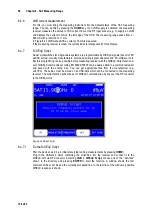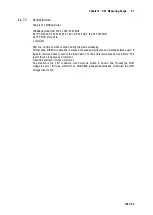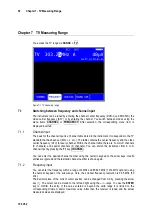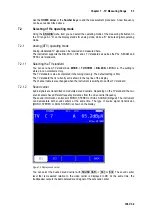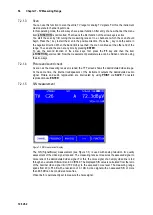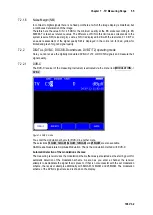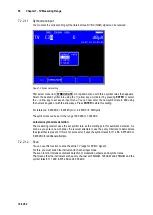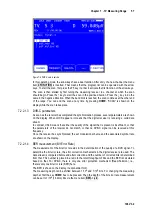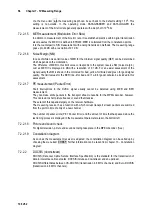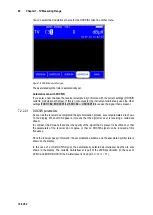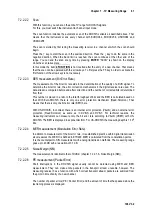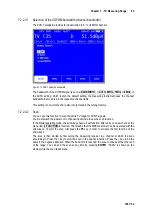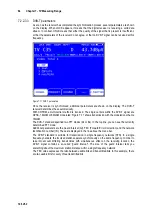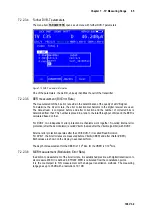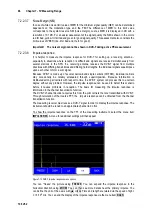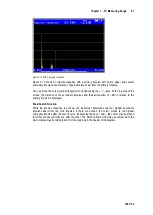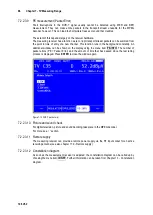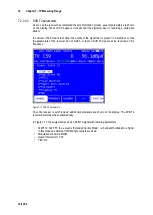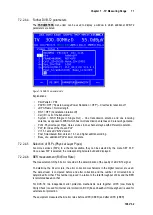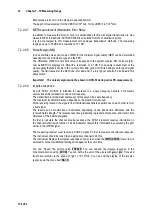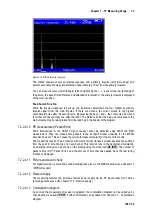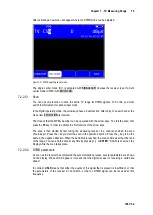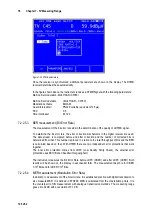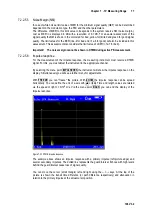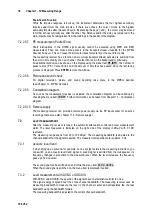
64
Chapter 7 - TV Measuring Range
106 V3.2
DVB-T parameters
7.2.2.3.3
As soon as the receiver has completed the synchronization process, several parameters are shown
on the display. When LOCK appears, it means that the digital receiver is receiving a valid data
stream. In contrast, UNLK means that either the quality of the signal that is present is insufficient,
or that the parameters of the receiver do not agree, or that no DVB-T signal can be received at this
frequency.
Figure 7-11 DVB-T parameters
Once the receiver is synchronized, additional parameters are shown on the display. The DVB-T
receiver determines these automatically.
With COFDM, a multi-carrier method is involved. The single carriers within the DVB-T signal are
QPSK, 16QAM or 64QAM modulated. Figure 7-11 shows transmission with the modulation scheme
16QAM.
The DVB-T standard specified two FFT modes (2k or 8k). In the top line, you can see the currently
determined FFT mode.
Additional parameters are the Guard Interval (GI), FEC (Forward Error Correction) and the network
identification number (ID). These are displayed in the line above the menu bar.
The DVB-T standard is suitable for transmission in single frequency networks (SFN). In a single
frequency network, the involved stations operate synchronously on the same frequency. In order to
take into account differing transit times with simultaneous effect on the receiving location, the
DVB-T signal contains a so-called “guard interval”. The size of the guard interval tells you
something about the maximum station distance within a single frequency network.
The FEC value expresses the ratio between usable bits and transmitted bits. In this example, there
are two usable bits for every three transmitted bits.

